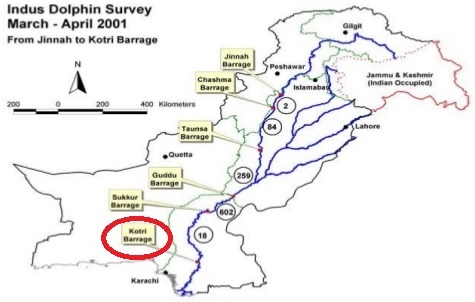KAZIND
- Kazind is an Indo-Kazakhstan Joint Army Exercise.
- The third edition of this exercise will be conducted in Otar region, Kazakhstan. 2nd Edition (2017) was organised in India.
- Its aim is to build and promote bilateral Army relations and exchange skills and experiences.
- Prabal Dostyk is another joint military exercise between India and Kazakhstan.
Permanent Indus Commission
- As per the Indus Water Treaty between India and Pakistan, Permanent Indus Commission should meet atleast once in a year.
- The commission has experts who look into issues and disputes on the ground over the utilisation of the waters of six rivers of the Indus system.
- Under the treaty, India has full use of the three “eastern” rivers (Beas, Ravi, Sutlej).
- Pakistan has control over the three “western” rivers (Indus, Chenab, Jhelum), although India is given rights to use these partially as well for certain purposes.
- The recent meeting was held in Lahore.
- It was agreed in the meeting that Pakistan will allow India to inspect the Kotri barrage in the lower Indus.
- New Delhi has agreed to Islamabad's request for a special inspection of the hydroelectric projects in the Jhelum river basin, including the Kishanganga scheme.
Click here to know about Kishanganga project.
Kotri Barrage
- It is a diversion dam used to control the amount of water passing through.
- It is located in the lower Indus river, Sindh province of Pakistan.
- The right-bank canal provides additional water to the city of Karachi.
- The other important barrages in the lower Indus are Guddu and Sukkur.

Click here to know more about Indus river system.
Spring Water System
- The word “Spring” means to leap from the ground.
- Natural springs are points on the earth surface through which ground water emerges and flows.
- Water from confined aquifers is forced out through a cave to make artesian wells.
- Sometimes springs are formed due to pressure from an underground water source which are usually called as “Hot Springs”.
- Natural springs acts as a source of water for both drinking and irrigation.
- A NITI Aayog constituted group of experts has urged the government to set up a dedicated mission to revive spring water systems in the Himalayan States.
- Springs are often the only source of irrigation in the Himalayan region with 64% of the total cultivable area fed by springs.
- In the Eastern Himalayas, Meghalaya has the highest number of villages having spring sources and Sikkim has the greatest density.
- In the Western Himalayas, Jammu & Kashmir had both the highest number of villages with springsand the greatest density.
- The task force also mooted an idea of introducing a “Spring Health Card”, preparing a digital atlas of the country’s springsheds, training ‘para-hydrogeologists’ who could lead grassroots conservation.
Indian Roofed Turtle
- It is a species of turtle, protected under Schedule 1 of Wildlife Protection Act, 1972.
- It is found in India, Bangladesh, Nepal and Pakistan.
- In India, it is found in Ganges, Brahmaputra and Indus River drainages.
- It is listed on CITES Appendix I.
- It is listed as “Least Concern” in the IUCN list of threatened species.
- The protected areas in Jalpaiguri is known for protecting this species.
- In addition to it, it is also found in Lota devi temple located on the basin of River Karala in Jalpaiguri.
- Society for Protecting Ophiofauna& Animal Rights (SPOAR), an NGO and the Wildlife Trust of India (WTI) has led an initiative to save the species from severe pollution in the river.
- They have installed the Kurma avatar (form of turtle) of Lord Vishnu on the outskirts of river to reduce pollution and to encompass the religious belief.
Hope Mission
- It is a Space mission by UAE which planned to send an unmanned probe to orbit Mars by 2021.
- It has become the first Arab Country to do so.
- The hope spacecraft will be a compact, hexagonal section spacecraft weighing approx. 1500 kg.
- The launching of the spacecraft is going to be coincided with the 50th anniversary of the founding of the UAE.
Source: The Hindu, PIB
